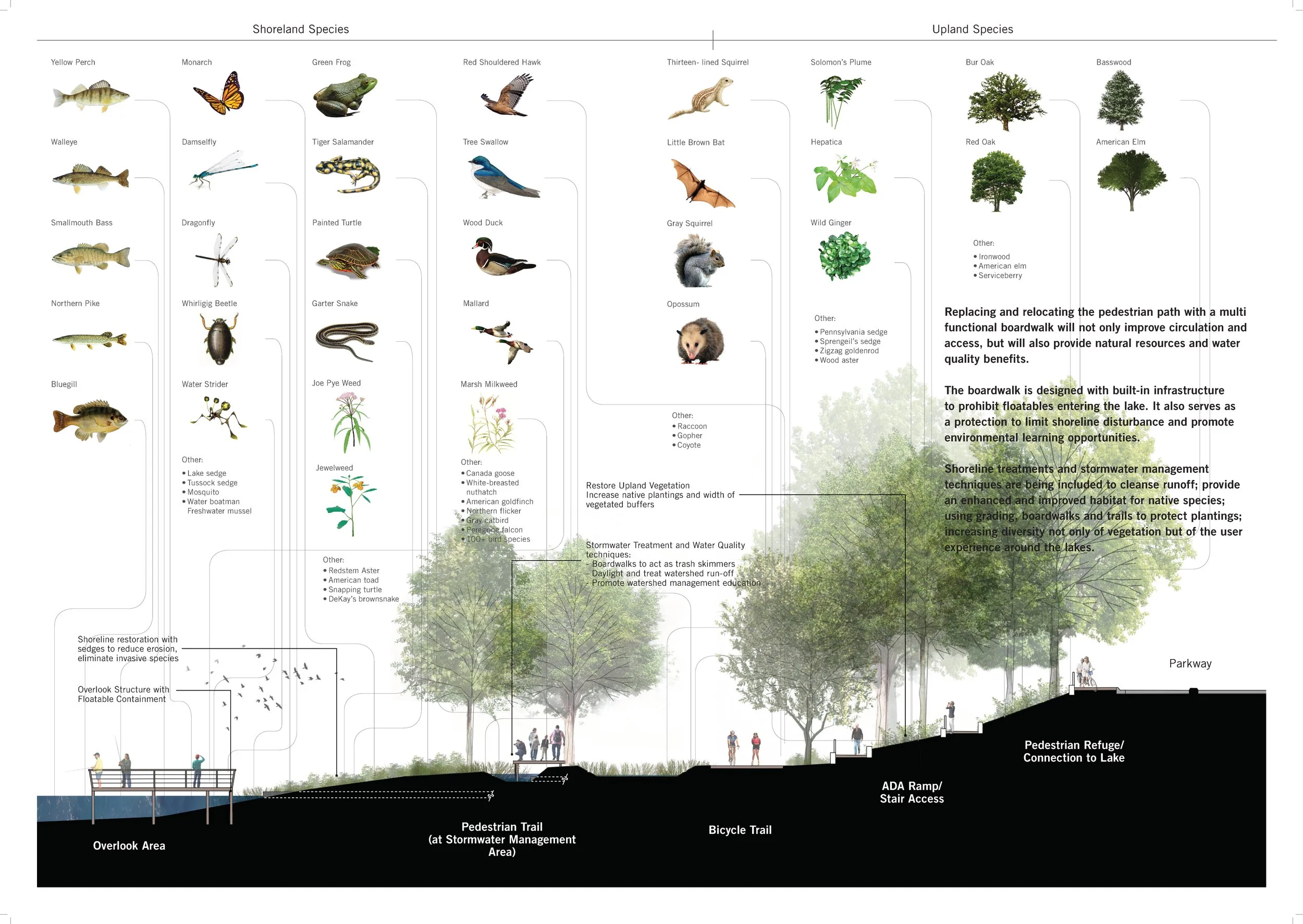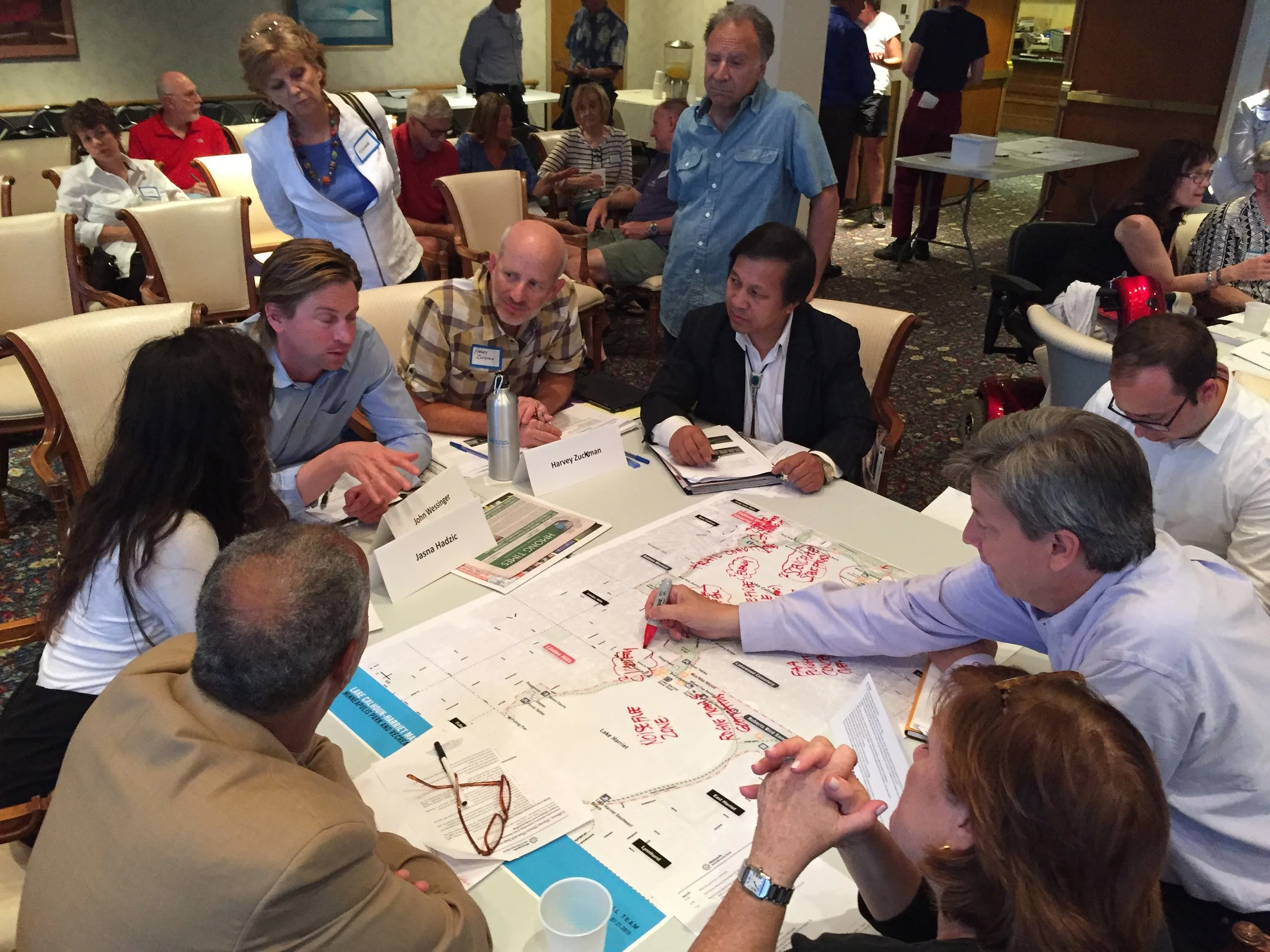
Bde Maka Ska/Lake Harriet Master Plan
Minneapolis, Minnesota
Work in collaboration with Perkins&Will
“The CAC recommends that the Park Board support the official and legal restoration of the name “Bde Maka Ska” to Lake Calhoun and advocate for such restoration in all appropriate fora, including the Hennepin County Board, the Minnesota Department of Natural Resources, and the Minnesota Legislature. To the extent that the Park Board determines that such restoration requires legislative action, the CAC recommends that the Park Board include such action in its legislative agenda.”
— MPRB Community Advisory Committee
Minneapolis Chain of Lakes Regional Park is home to two of the largest and most popular lakes, Bde Maka Ska and Lake Harriet. These two parks are centerpieces of the historic Grand Rounds: a network of parks, trails, and green spaces that have made Minneapolis world-renowned. A 25-year vision is set forth in this master plan for Bde Maka Ska and Lake Harriet, which included a historic and strategic recommendation that restored Lake Calhoun’s name to its original Dakota name: Bde Maka Ska. As a result of this step, other inclusionary and equitable distribution recommendations were followed through both lakes. The master plan also sought to balance natural resource conservation and recreational opportunities. An overriding goal was to reveal the natural and cultural history of the lakes, expressing the connections between land and ecology.
Ana was the project manager and lead landscape architect for the project while employed at Perkins&Will.
Project Recommendations:
The restoration of the Dakota name Bde Maka Ska from Lake Calhoun which was the original Native American name prior to the park’s establishment
Incorporate interpretation that honor the broader history and culture of Native American heritage
Design spaces that are equitable to all users regardless of physical abilities, demographic, or cultural background
Redistribute recreational uses and facilities appropriately, in order to alleviate congestion and safety concerns
Create safer pedestrian and bicycle linkages – such as a land bridge on the north edge of Bde Maka Ska – to extend recreational and ecological benefits
Address water quality and treat stormwater run-off and hazardous turf chemicals before discharge by designing park facilities with built-in infrastructure prohibiting floatable materials from entering the lakes
Provide shoreline restoration strategies to minimize human impact
Reduce mowing areas to improve native habitats, and promote environmental learning opportunities
Reduce CO2 emissions by prioritizing public transit‐related and non‐motorized solutions including shared-use parking facilities and improved pedestrian and bicycle circulation
Design facilities with climate change in mind resilient to extreme weather conditions. For example, replacing and relocating the pedestrian path with a multi-functional boardwalk designed to adapt to extreme conditions, it would also serve as a barrier to limit shoreline disturbance and promote environmental learning opportunities
Shoreline treatments and stormwater management techniques are included to cleanse runoff, provide restored habitats for native species, increase vegetation diversity, and enhance the user experience around the lakes
Services:
Master Planning
Site and Landscape Architecture Design
Project Implementation Strategy, Phasing, and Estimation of Probable Costs
Operations and Maintenance Strategy
Stakeholder and Community Engagement Facilitation
















